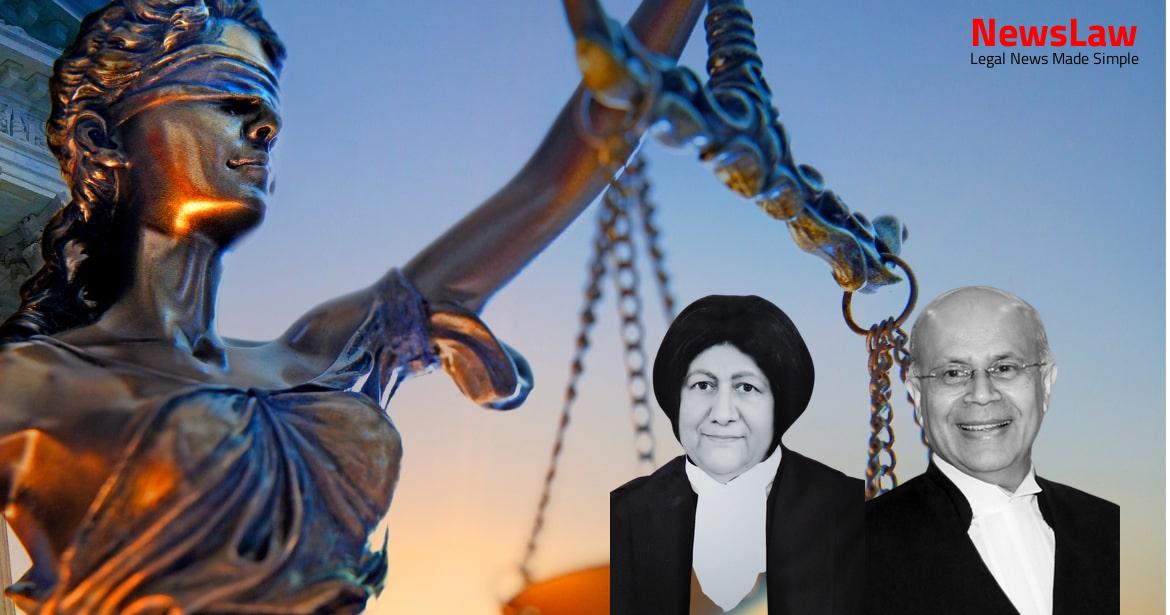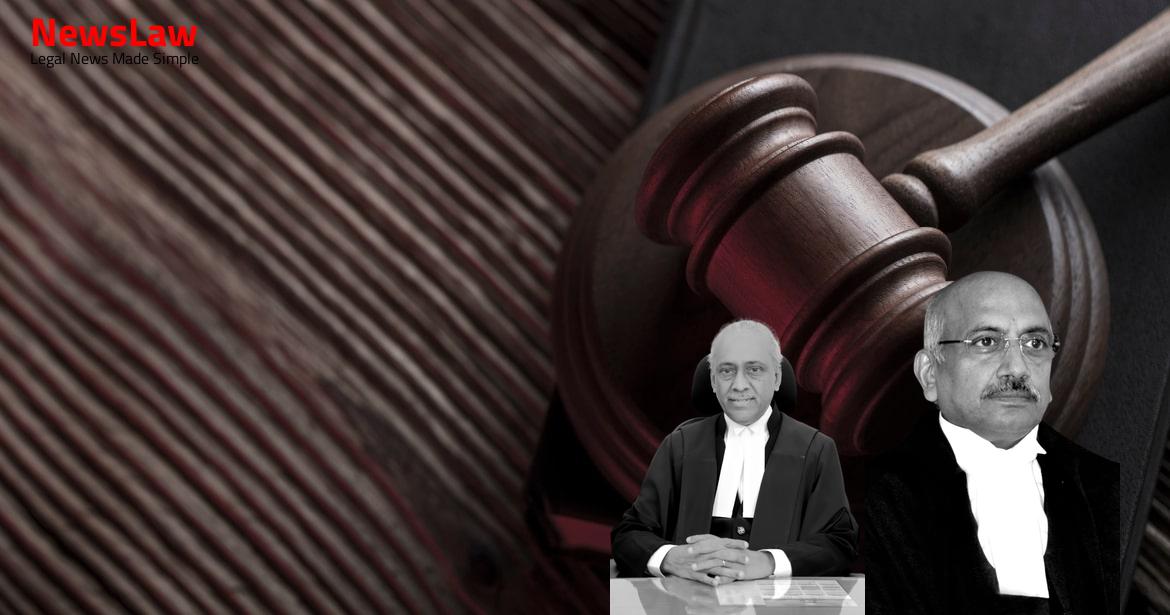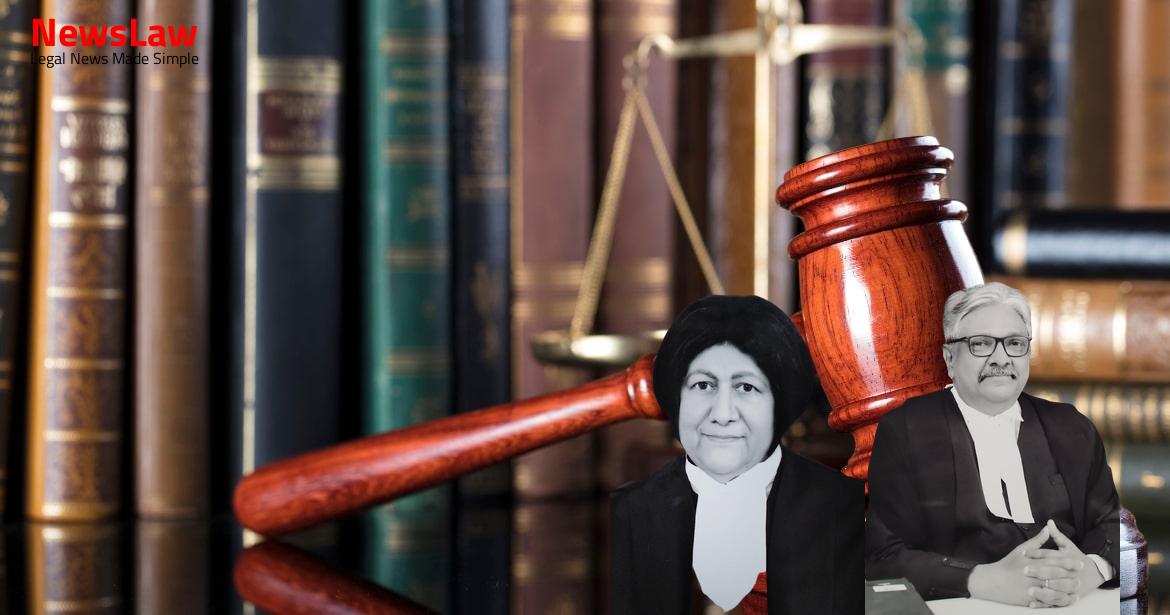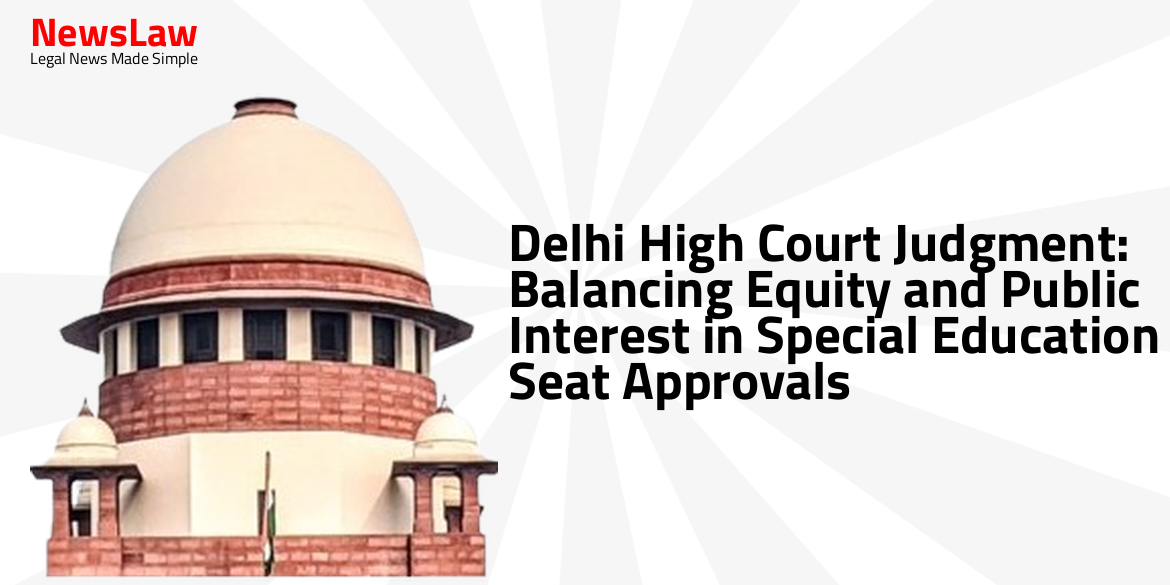Delve into the insightful legal analysis conducted by the court in a recent Second Appeal case. The court’s thorough examination of substantial questions of law and the limitations of appellate jurisdiction provide valuable insights into the complexities of legal reasoning in the Indian judicial system. Follow along to understand how legal principles are applied and contested in the pursuit of justice.
Facts
- The Respondent Plaintiff filed a suit in 1994 claiming ownership of the suit premises, possession from the Appellant, and payment of arrears of rent and future profits.
- The suit premises were originally purchased by the Respondent Plaintiff’s father and rented out to the Appellant’s father.
- The Second Appeal filed by the Appellant was dismissed, while the one filed by the Respondent was allowed in part.
- The Appellant claimed absolute ownership of the premises, acquired through a registered sale deed.
- The Respondent claimed rent and occupation charges in the suit.
- The Appellant asserted ownership since 1966 under a Deed of Release.
- The Appellant denied the Respondent’s title and ownership to the premises.
- The Respondent limited his claim for rent to three years due to limitation.
- The District Munsif framed three issues for adjudication, including ownership and possession rights.
- The First Appellate Court found the Appellant liable to pay ‘backage income’ for the portion of the suit property owned by the Respondent Plaintiff.
- The Respondent Plaintiff was denied the relief of recovery of possession as no landlord-tenant relationship was established between the parties.
- The Trial Court dismissed the suit due to a lack of evidence proving the property was purchased by the Respondent Plaintiff’s father.
- The First Appellate Court allowed declaration of title for the portion of the property owned by the Respondent Plaintiff but not recovery of possession.
- The High Court dismissed the Appellant’s Second Appeal, allowing the Respondent Plaintiff’s appeal for recovery of half of the suit premises.
Also Read: Land Sale Dispute Legal Analysis
Issue
- The main issue framed by the High Court was whether the Lower/Appellate Court was correct in denying the Respondent Plaintiff the relief of possession despite granting mesne profits.
- The High Court raised the question of whether the Lower Appellate Court’s decision was justified, particularly given that mesne profits had been awarded, which are essential for invoking jurisdiction under Section 100 of the CPC.
Also Read: Judicial Review of Environmental Compliance Orders
Arguments
- A second appeal only lies on a substantial question of law.
- If statute confers a limited right of appeal, the Court cannot expand the scope of the appeal.
- It was not open to the Respondent-Plaintiff to re-agitate facts or to call upon the High Court to reanalyze or re-appreciate evidence in a Second Appeal.
Also Read: Legal Analysis on Limitation Period in IBC Proceedings
Analysis
- Section 100 of the Civil Procedure Code (CPC) provides for Second Appeal
- An appeal to the High Court lies if a substantial question of law is involved
- The period of limitation for suits for recovery of immovable property is prescribed
- The memorandum of appeal in Second Appeal must state the substantial question of law involved
- The appeal shall be heard based on the question formulated
- The High Court erred in allowing possession to the Respondent-Plaintiff based on the Appellant-Defendant not raising the defense of adverse possession.
- The Appellant-Defendant claimed ownership of the suit property based on a deed of conveyance executed over 75 years ago.
- The High Court should not have reversed the First Appellate Court’s finding without evidence showing possession was adverse.
- The Appellant-Defendant’s possession since 1966 was claimed on the strength of a deed of release executed by his father.
- The First Appellate Court’s conclusion on ownership of the suit property was based on reasoned evidence examination.
- The High Court should have focused on substantial legal questions and not just factual interpretations.
- The High Court erred in concluding there was a contradiction in the findings of the First Appellate Court.
- The concept of ‘mesne profits’ and wrongful possession were not established in the case against the Appellant-Defendant.
- The necessity of a substantial question of law for second appeals was highlighted.
- The High Court’s handling of questions of law, possession, and limitation in the case was critiqued.
- The principles for determining a substantial question of law were enunciated by a Constitution Bench in Sir Chunilal v. Mehta & Sons Ltd. v. Century Spg. & Mfg. Co. Ltd.
- In Hero Vinoth v. Seshammal, tests to distinguish between mere questions of law and substantial questions of law were summarized.
- For a question of law to be substantial, it must be debatable, not settled by law or precedent, and have a material impact on the case.
- A substantial question of law must be necessary for a just decision, emerge from sustainable findings of fact, and be laid in the pleadings.
- The overall consideration is the balance between doing justice and avoiding prolongation of legal disputes as per Santosh Hazari v. Purushottam Tiwari.
- In a Second Appeal, the High Court’s jurisdiction is limited to substantial questions of law, not challenging findings of fact.
- The incorrect application of legal principles or terms of a document gives rise to a substantial question of law.
- Under Section 100 CPC, a second appeal can be filed only if a substantial question of law is involved in the case.
- Formulation of substantial question of law is mandatory in accordance with Section 100 of the CPC.
- Mere reference to grounds mentioned in the Memorandum of Second Appeal is not sufficient to comply with the requirement of Section 100.
- The judgment of the High Court did not address or decide any question of law, let alone a substantial question of law.
- It is not acceptable to dismiss a second appeal with a non-speaking order stating the absence of a substantial question of law.
- The High Court erred in not discussing the question of law involved in the case before allowing the second appeal.
Decision
- The judgment and order of the High Court is set aside in relation to Second Appeal No.558 of 2000
- The judgment and decree of the First Appellate Court is reinstated
Case Title: NAZIR MOHAMED Vs. J.KAMALA AND ORS. (2020 INSC 511)
Case Number: C.A. No.-002843-002844 / 2010



